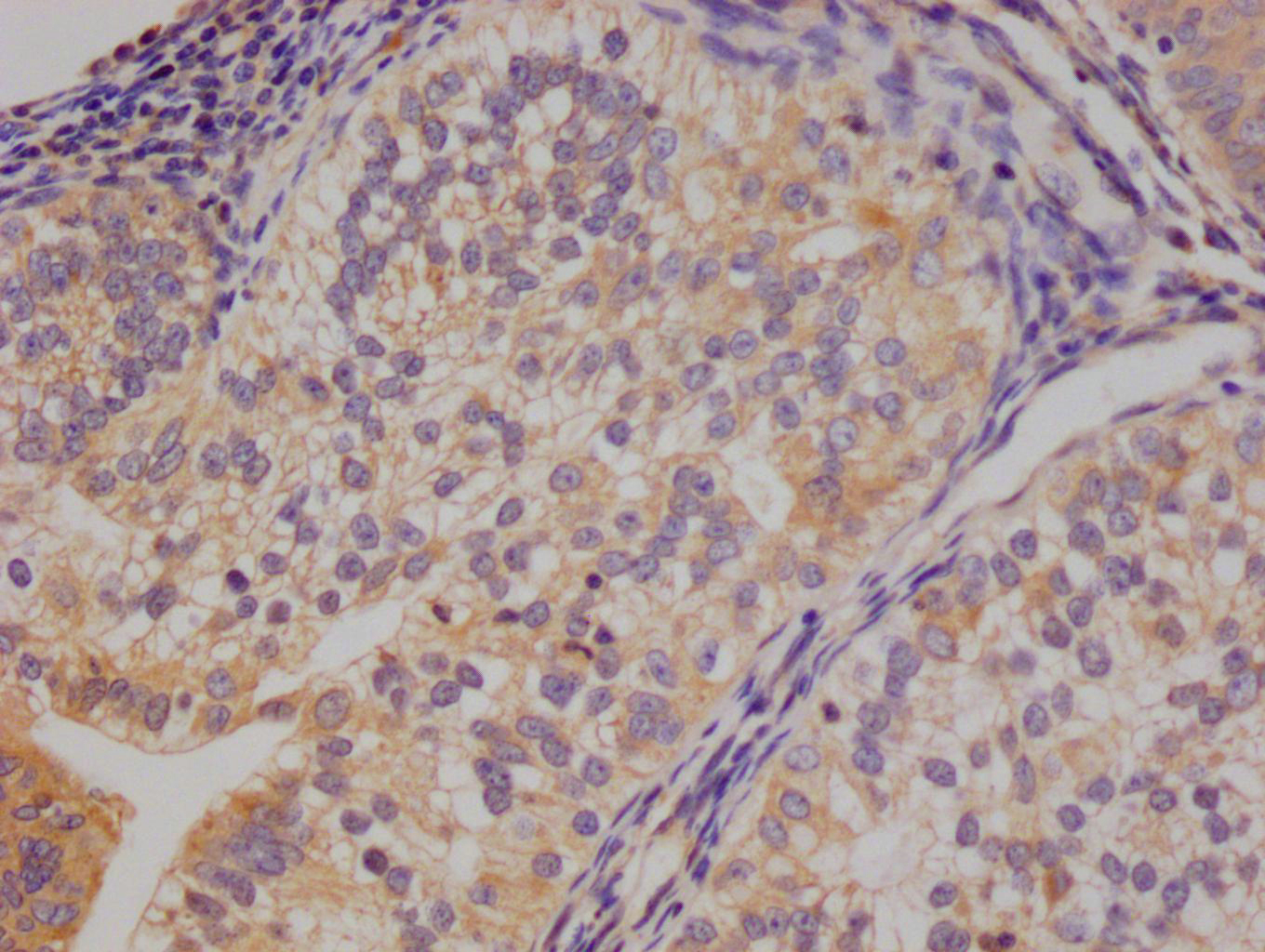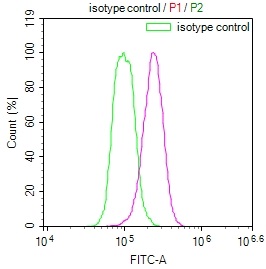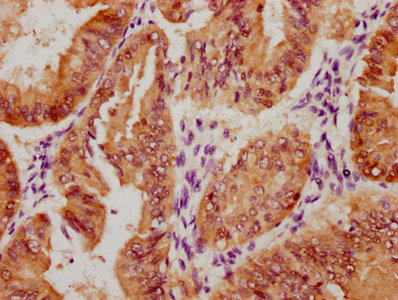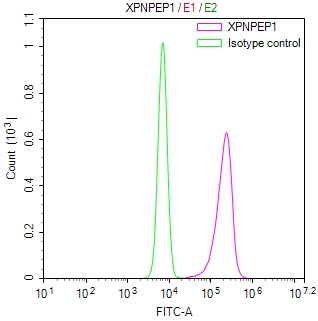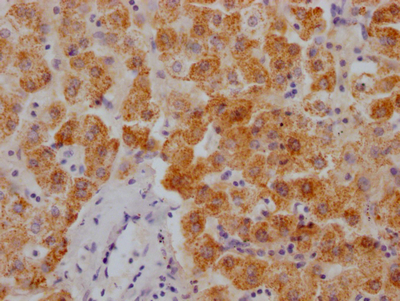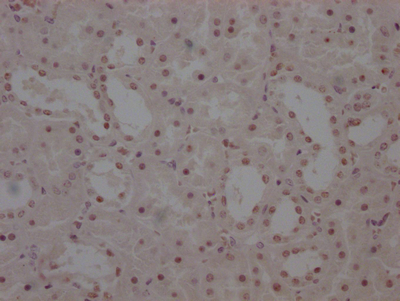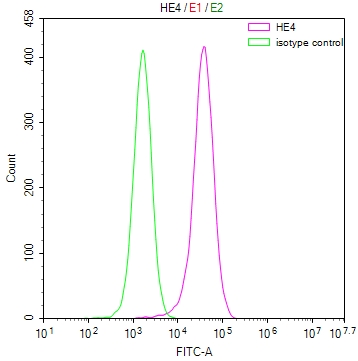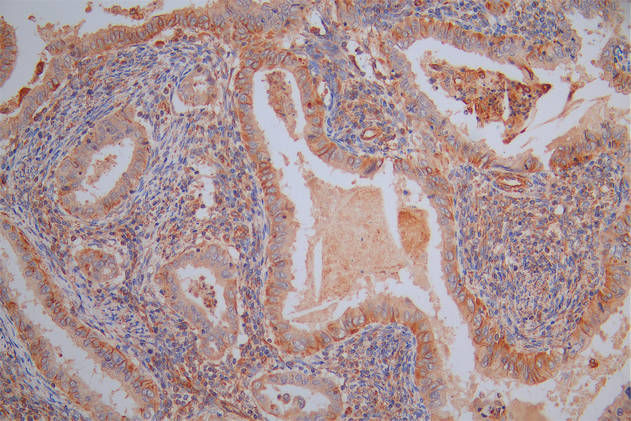-
中文名稱:BSA鼠單克隆抗體
-
貨號:CSB-MAP027691E0m
-
規格:¥1320
-
圖片:
-
其他:
產品詳情
-
產品描述:BSA單克隆抗體(CUSABIO貨號:CSB-MAP027691E0m)是一款針對牛血清白蛋白(Bovine Serum Albumin)研發的高特異性科研試劑,適用于ELISA和Western Blot等蛋白質檢測實驗。BSA作為分子量約66.4kDa的球狀蛋白,廣泛存在于生物實驗中作為載體蛋白或封閉劑使用,其穩定的三級結構和豐富的抗原表位使其成為抗體開發的重要靶標。本產品采用單克隆抗體技術制備,具有嚴格的種屬特異性,可精準識別牛源BSA分子,在免疫印跡中能清晰呈現目標條帶,在酶聯免疫吸附實驗中展現出高靈敏度的結合性能。作為科研實驗的關鍵工具,該抗體適用于BSA偶聯物的檢測驗證、實驗體系中交叉反應分析以及生物制劑中殘留BSA的定量研究,為蛋白質相互作用、藥物載體開發等基礎研究提供可靠支持。AntibodySystem品牌通過重組抗體技術平臺確保產品批間一致性,滿足實驗室對穩定性與重復性的嚴格要求。
-
產品名稱:mouse anti-bovine ALB monoclonal antibody
-
Uniprot No.:
-
基因名:
-
別名:ALB antibody; Serum albumin antibody; BSA antibody; allergen Bos d 6 antibody
-
宿主:mouse
-
反應種屬:Bovine
-
免疫原:bovine Serum albumin
-
免疫原種屬:bovine
-
標記方式:Non-conjugated
-
克隆類型:monoclonal
-
抗體亞型:IgG2b
-
純化方式:>95%,protein G purifed
-
克隆號:1D11A1
-
濃度:It differs from different batches. Please contact us to confirm it.
-
保存緩沖液:Preservative: 0.03% Proclin 300 Constituents: 50% Glycerol, 0.01M PBS, PH 7.4
-
產品提供形式:liquid
-
應用范圍:ELISA,WB
-
推薦稀釋比:
Application Recommended Dilution WB 1:500-1:5000 -
Protocols:
-
儲存條件:Upon receipt, store at -20°C or -80°C. Avoid repeated freeze.
-
貨期:Basically, we can dispatch the products out in 1-3 working days after receiving your orders. Delivery time maybe differs from different purchasing way or location, please kindly consult your local distributors for specific delivery time.
-
用途:For Research Use Only. Not for use in diagnostic or therapeutic procedures.
相關產品
靶點詳情
-
功能:Binds water, Ca(2+), Na(+), K(+), fatty acids, hormones, bilirubin and drugs. Its main function is the regulation of the colloidal osmotic pressure of blood. Major zinc transporter in plasma, typically binds about 80% of all plasma zinc. Major calcium and magnesium transporter in plasma, binds approximately 45% of circulating calcium and magnesium in plasma (Probable). Potentially has more than two calcium-binding sites and might additionally bind calcium in a non-specific manner. The shared binding site between zinc and calcium at residue Asp-272 suggests a crosstalk between zinc and calcium transport in the blood (Probable). The rank order of affinity is zinc > calcium > magnesium (Probable). Binds to the bacterial siderophore enterobactin and inhibits enterobactin-mediated iron uptake of E.coli, and may thereby limit the utilization of iron and growth of enteric bacteria such as E.coli. Does not prevent iron uptake by the bacterial siderophore aerobactin.
-
基因功能參考文獻:
- The interaction of DRV with bovine serum albumin (BSA), a major carrier protein, has been studied under simulated physiological conditions (pH7.4) by multi-spectroscopic techniques in combination with molecular modeling. PMID: 28753530
- hese obtained results provide an in-depth understanding of the interaction of the acid azo dye AO10 with serum albumins. PMID: 29126006
- that thiamine hydrochloride (TA) is located in site I of bovine serum albumin (BSA). PMID: 27550086
- The molecular dynamics results show how the negatively charged BSA at pH7 adsorbs to the negatively charged silica surface, and reveal a unique orientation with preserved secondary and tertiary structure. The experiments then show that the protein forms complete monolayers at approximately pH6, just above the protein's isoelectric point (pH5.1). PMID: 28350173
- Molecular dynamics (MD) simulation results demonstrate that the "hard protein" lysozyme retains much of its secondary structure during adsorption, whereas BSA loses it almost completely. BSA has a considerably larger adsorption energy compared to that of lysozyme, which does not scale with chain length. Desorption simulations are carried out using classical steered MD. PMID: 27421144
- identified a total of 125 carbonylated residues in bovine serum albumin after extensive in vitro metal ion-catalysed oxidation PMID: 28062376
- Degradation of BSA by serine proteases was monitored with Fourier transform infrared (FT-IR) and ultraviolet circular dichroism (UV-CD). alpha-Helical structure of BSA was converted into unordered structure upon digestion. PMID: 26926394
- Data show that the maximum adsorption occurred at the isoelectric point (pH 4.7) of bovine serum albumin (BSA). PMID: 26673525
- The ITC results indicated that the interaction between the protein (BSA and BHb) and QDs-612 was spontaneous and the predominant force was hydrophobic interaction PMID: 25143002
- Data (including data from biophysical studies using Langmuir lipid monolayer technique) suggest that human/bovine ALB exhibits minimal electrostatic repulsion and inserts effectively into phospholipid monolayers. [REVIEW] PMID: 24267981
- data indicate that conjugation of carboxyl groups with monosaccharide generates functional BSA with membrane-perturbing activities on the lipid-water interface. PMID: 25449061
- Data suggest that native BSA samples can be dehydrated to approximately 450 waters per protein molecule via microglassification and then reverted to native-like conformation upon rehydration with only minor irreversible aggregation. PMID: 24415208
- molecular modeling approaches were employed to determine the interaction between lysionotin and bovine serum albumin (BSA) at physiological pH PMID: 24398555
- Bovine Serum Albumine aqueous solutions in the presence of NaCl are investigated for different protein concentrations and low to intermediate ionic strengths. Protein interactions are modeled via a charge-screened colloidal model. PMID: 23534667
- A crystallographic structural study allows identification of serum albumin fragments responsible for immunogenicity and the postulation of a mechanism for antigen-antibody recognition in cattle. PMID: 22993082
- Glass transition and dynamics in BSA-water mixtures over wide ranges of composition studied by thermal and dielectric techniques. PMID: 21798376
- The dynamics of bovine serum albumin (BSA) and human fibrinogen (Fg) at low concentrations were observed at the solid-aqueous interface as a function of temperature. PMID: 22713578
- serum albumin possesses chaperone-like properties and that this activity is maintained under a number of physiologically relevant conditions. PMID: 22549788
- Interaction between 2',4-dihydroxychalcone and the N, f, e conformers of albumin was exothermic and spontaneous. PMID: 22450828
- The results showed that the riboflavin could efficiently bind to BSA in aqueous solution. PMID: 22154267
- The unfolding and refolding of BSA appear to proceed through intermediates and both the processes are sequential in nature. PMID: 21993230
- The results indicated that the binding abilities of vitamin B12 to BSA in the acidic and basic pH regions (pH 2.5, 3.5, 5.0, and 9.0) were lower than that at simulating physiological condition (pH 7.4). PMID: 21955947
- new insights on bovine serum albumin self-assembly process PMID: 21303653
- Data indicate that CD spectroscopy of the HSA and BSA released in solution after desorption from the matrices shows that, while both proteins partially regain their helical structure, they show a distinct behaviour in their tertiary structure. PMID: 20692819
- Data show that the fluorescence quenching process may occur through energy transfer from singlet excited state of tryptophan in BSA to the corresponding level of ASP. PMID: 20667434
- L-Arginine does not prevent amyloid-like fibril formation by BSA. PMID: 20204431
- Our data suggest that the efficacy of this detoxication system is based on the high concentration of albumin in plasma (and in the rest of the body), and not on the catalytic efficacy itself, which is low for albumin. PMID: 20211614
- The shortest binding distance and energy transfer efficiencies between donor BSA and acceptor methyl pheophorbide-a were obtained by Forster's nonradiative energy transfer mechanism. PMID: 16128079
- Data show that the apparent complexation constant of Pb2 x BSA is lgK = 11.61, and the nitrogen in BSA could coordinate with lead in Pb2-BSA. PMID: 15852867
- Data show that the binding constants of serum albumin and ZnPc(COOH)16 were 2.25-2.94 x 10(6) L x mol(-1). PMID: 17058928
- Data show that the binding power between BLFX and BSA is electrostatic effect. PMID: 17058955
- Data show that the combination reaction of AYR with BSA was a static quenching process. PMID: 17058958
- Data show that in long interaction period or at high concentration of SDS, SDS unfolded BSA by decreasing the alpha-helix structure and increasing the random coil. PMID: 17112025
- Data show that the binding constants (KA) between quercetin and BSA were 2.8 x 10(8) (26 degrees C) and 3.1 x 10(8) (36 degrees C), and the binding sites (n) were 1.7+/-0.02. PMID: 17112044
- Data show that the binding constant of this compound with bovine serum albumin (BSA) in aqueous solution was is Ka = 1.995 x 10(5) dm3 x mol(-1) and the binding site number is n = 1.12. PMID: 16201357
- results indicated that the binding reaction between BSA and purpure-18-imide was a single static quenching process. PMID: 16097695
- Data indicate that the hydrophobic force was the main binding force of TIF with bovine serum albumin in aqueous solution. PMID: 16329500
- Data show that the interaction of the umbelliferone-BSA was driven mainly by electrostatic force which was enhanced by Cu2+ and Zn2+. PMID: 16329506
- glycation and oxidation effects on the structure of serum albumin; the partial unfolding of the tertiary structure which accompanies the aggregation process is similar both in native and glycated BSA PMID: 20006741
- Structural analysis showed that lipids bind BSA via both hydrophilic and hydrophobic contacts. PMID: 19961210
- association constant and thermodynamic parameters and binding characterisitics for interaction of nigerloxin with bovine serum albumin. PMID: 15134145
- Temperature-dependent secondary structure and conformational changes to serum albumin occur twice, around 57 and 75 degrees C., and reveal that the alpha-helix and turn structures of serum albumin are cooperatively denatured by heating. PMID: 15350138
- Albumin up-regulates ligand-binding TGF-beta receptors on cultured proximal tubular cells. Albumin-induced activation of local Ang II production appears to be responsible for this effect. PMID: 15496155
- The results from the models show that there are at least two different binding sites located in the BSA protein with different water accessibility PMID: 16382334
- Human preadipocytes and freshly isolated adipocytes incubated with bovine serum albumin (BSA) in vitro secrete significantly higher amounts of cytokines IL-6, -8, and -10, and TNF-alpha compared with cells incubated without BSA. PMID: 16452161
- Serum albumin and serum retinol-binding protein(sRBP) are not components of bovine interphotoreceptor matrix(IPM). Serum albumin and sRBP can not participate in binding and transport of visual cycle retinoids in IPM of bovine retina. PMID: 17200663
- Bovine serum albumin is common allergen responsible for cow's milk allergy. Cross reactivity with serum albumins in meat/epithelial cells of other mammals results. PMID: 17680908
- BSA is able to form well-ordered beta-sheet rich aggregates which nevertheless do not possess the same structural rigidity as classical fibrils. PMID: 17689306
- interaction of bovine serum albumin with isoxazolcurcumin and diacetylcurcumin yielded binding constants, minor BSA conformation changes, and binding site PMID: 18037556
- The present study shows that GM1 has a strong effect on the conformation of BSA depending on the conformational states of the protein that would relate to a physiological function of GM1 such as acting as the receptor of proteins in the cell membrane. PMID: 18205315
顯示更多
收起更多
-
亞細胞定位:Secreted.
-
蛋白家族:ALB/AFP/VDB family
-
組織特異性:Plasma.
-
數據庫鏈接:
Most popular with customers
-
-
YWHAB Recombinant Monoclonal Antibody
Applications: ELISA, WB, IHC, IF, FC
Species Reactivity: Human, Mouse, Rat
-
Phospho-YAP1 (S127) Recombinant Monoclonal Antibody
Applications: ELISA, WB, IHC
Species Reactivity: Human
-
-
-
-
-



